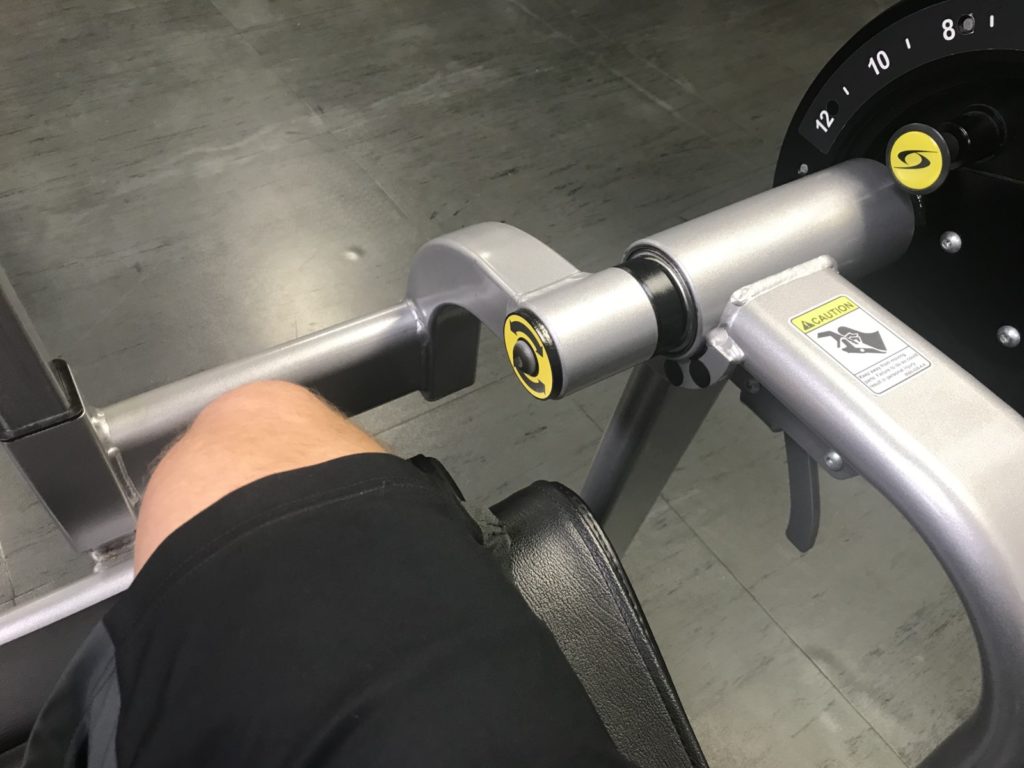In this post we look at how to use isometrics to reduce joint pain and improve muscle function.

Isometrics are an extremely accurate form of stimulus to your muscular system.
Used intelligently, they can help you improve muscle function, rehab from injury, increase range of motion and reduce pain.
What are isometric muscle contractions?
Isometric means there’s no change in the angle of the joint the involved muscles are acting upon.
Because of this you can get very specific about which muscles you’re targeting, at what points in their range and by how much.
Additionally, as there’s no motion at the joints, issues with these structures can be considered and worked around.
This gives you a high level of control and certainty.
Let’s take a look at a practical example to illustrate how you might apply isometrics for issues in or around the knee.
Isometrics for knee issues
I’m sure you’ve experienced a sore knee at some point.
Perhaps this occurred after a long run or some heavy squats for example. No matter, let’s say you now find certain positions are causing you discomfort.
Pain and inflammation have a direct impact on the muscular system.
Just 20ml of saline fluid injected into the knee to mimic the impact of inflammation, has been shown to cause reflex inhibition of the quadriceps.
In other words your quadriceps may lose their ability to contract effectively if you have knee pain.
Whilst this protective response is useful in the short term, in order for you to successfully return to your activities, this must be addressed.
Isometrics have been shown to reduce inhibition, whilst isotonic contractions of the muscle (lengthening and shortening) may have little effect.
They also give you the opportunity to make improvements to the muscles in the area without fear of making joint issues worse.
Knee extension isometrics
Ideally use a leg extension machine for this, but if you don’t have access to one, you can replicate the position and use manual resistance in the form of a willing partner.
If you’re using a machine, first adjust the seat so your knee is in line with the axis. This should be clearly marked to the side of the knee and is pictured in yellow below.

Slowly straighten your knee without any additional resistance. Notice where in the range you seem to experience soreness.
This may occur primarily at either end of the range, or at some point within it. Make a note of the position that seems to be most problematic.
Crucially this will also give you a clear picture of which parts of the range are pain free. This is where we’re going to begin.
How to apply isometrics to work around or reduce knee pain
Let’s say you’re experiencing soreness somewhere in the middle of the range between the knee being bent at 90 degrees and fully straight. We’ll call it 45 degrees.
This gives you two viable arcs to work within from 90 degrees to say 50 degrees and 40 degrees to fully extended.
That’s 80 degrees of goodness to be explored without fear of pain.
Start at 90 degrees providing you can comfortably achieve this amount of knee flexion.
Put the pin in the bottom of the weight stack so there’s no danger of you moving the weight and set the input pad so it’s relatively high up your shins. This will reduce the forces at your knee.
Gently push into the pad by contracting your thigh muscles. Hold for 5 secs and then relax.
You can do this with just one leg or use both. If you choose to use both, make sure your focus is on the symptomatic leg.
Repeat 5 times and with each set slowly ramp up the force you’re applying to the pad, providing you experience no issues.
Now move the input pad up to the next setting. This will allow you to straighten your leg a little more.
Isometrics generally have a strength carry over of between 5 and 15 degrees. Consider this when choosing the next position if the machine you’re using allows you to be that specific.
If it doesn’t, you may need to ask somebody to hold the pad for you. This is a better option than simply selecting a lighter weight and holding it in place.
Repeat this process at 10-15 degree increments until you get to the end of the range, bypassing the painful position.
Progressing isometrics
Once you’ve worked through this process a few times on non consecutive days, check back in on that provocative position.
Does it still cause you issues?
Can you now perform low intensity isometrics in that position?
If you can awesome, this is the next step towards adding motion. If you can’t, continue to work around the issue and increase either the intensity or time you’re pushing for to stimulate further gains.
Isometrics for long term joint issues
Now let’s say the sensation you have coming from your knee is related to some changes within the joint itself.
Isometrics give you the ability to have a positive impact on the muscles that act on the joint, without placing potentially provocative forces through the joint itself.
Studies have shown this can both reduce pain and increase strength in Osteoarthritis sufferers for example.
Use the same process described above, avoiding positions that cause you pain.
Summary
Isometrics are an accurate and versatile method of stimulating the muscular system in the presence of joint issues.
They are effective in reducing the muscular inhibition associated with pain and inflammation and give you the opportunity to gain strength at specific joint angles.
If your goal is to recover from injury, improve range of motion, reduce pain, or strengthen your muscular system, isometrics can be very useful.